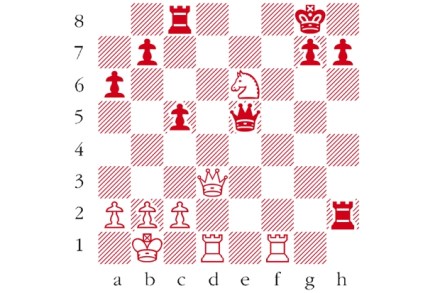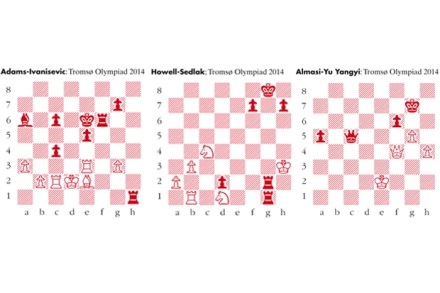No. 334
White to play. This position is from Keene-Nunn, Surrey Junior Championship 1963. This game started with the Scotch Game opening. White is winning easily but what is the quickest kill? Answers to me at The Spectator by Tuesday 7 October or via email to victoria@spectator.co.uk or by fax on 020 7681 3773. The winner will





















